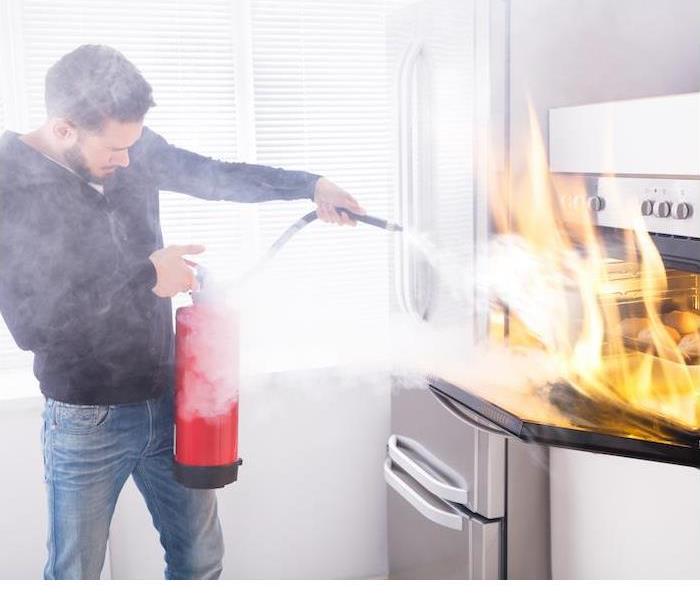Kitchens & Fire Hazards
5/17/2019 (Permalink)
Aside from often being the hub of the home, the kitchen can be a warm, cozy place for family and friends to gather for a delicious meal and often quality time. However, danger can lurk in the kitchen. That danger is fire—and this is often the space where home fires start.
Fires that begin as a result of cooking are the No. 1 cause of home fires and injuries, and the leading cause of these kitchen fires is unattended cooking.
In 2017, State Farm paid out over $130 million in homeowners insurance claims related to grease and other cooking fires. According to the insurance company, these are the worst states for kitchen fires:
- North Carolina
- Texas
- Pennsylvania
- California
- Ohio
- Illinois
- Maryland
- New York
- Alabama
- Georgia
Staying in the kitchen to keep watch over what is cooking is not the only fire safety tip you should be following. Let’s take a look at some other helpful tips to observe while cooking:
1. Watch out for your clothing. If you are wearing long, flowing sleeves or big, baggy clothing, it could catch on fire if you aren’t careful and it comes into contact with an open flame or a stove’s hot surface. It’s best to wear short or close-fitted sleeve shirts and make sure any baggy shirts are tucked in or tied back.
2. Watch the items that are placed around or on the stovetop. Kitchen towels, oven mitts, appliance cords or even curtains too close to the stovetop when cooking are quick to catch fire. Ideally, anything flammable needs to be moved away from it.
3. There needs to be a fire extinguisher in or near the kitchen. Hopefully you have at least one fire extinguisher located in your home near your kitchen. Be sure that you know how to properly use the extinguisher, just in case it is ever needed.
4. Hot grease should not be thrown in the garbage can. While the grease may not be on fire, it may just be hot enough to cause something in the trash to ignite and burn. Let the grease cool for a while before disposing of it in an old coffee can. Also, know the “smoke point” temperatures of oils you cook with. Never subject a low-smoke point oil to high heat when cooking, as it could catch fire.
5. Create and establish an escape plan in the event of a fire. Who wants to thinks about worst-case scenarios? Nobody, but it’s better to be prepared should an emergency occur. Go over exit routes and designated meeting points with your family, making sure that everyone knows what to do.
Fire safety in the kitchen is an absolute necessity, as it can help prevent dangerous and destructive cooking fires. If your home has experienced damage from a cooking fire, know that SERVPRO of Cedar Mill/Oak Hills is here to make it “Like it never even happened.”






 24/7 Emergency Service
24/7 Emergency Service
